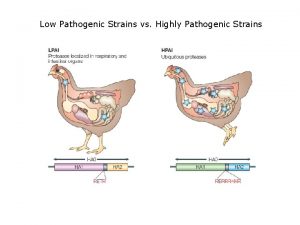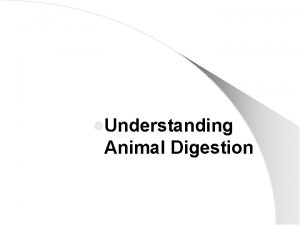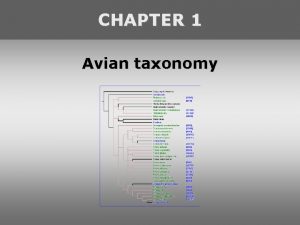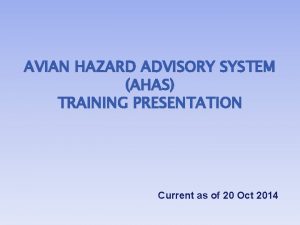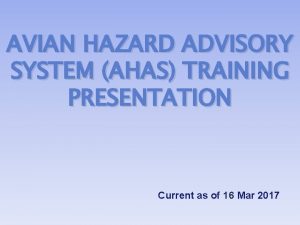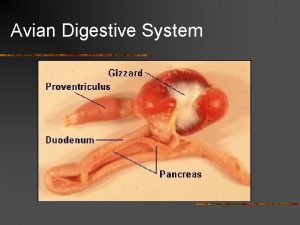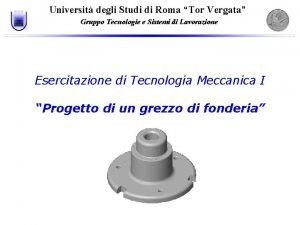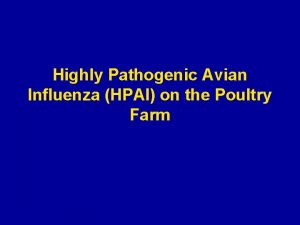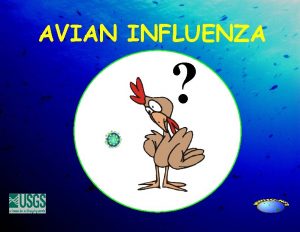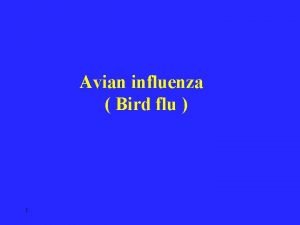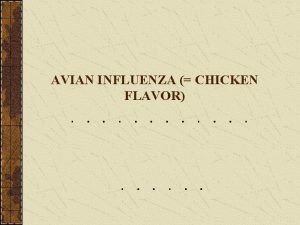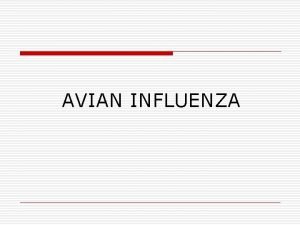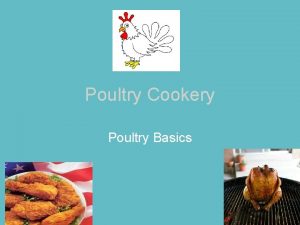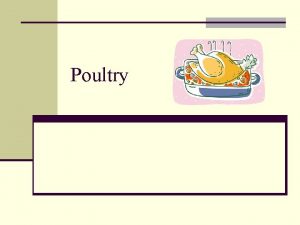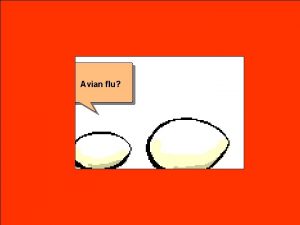High Path Avian Influenza HPAI Emergency Poultry Disease













- Slides: 13

High Path Avian Influenza (HPAI) Emergency Poultry Disease Planning (EPDP) Meeting October 1, 2015


Now on social media! Facebook. com/INAvian. Health


USDA HPAI Epidemiology Studies • Goal: Identify transmission pathways • Conclusion: Not enough evidence to point to a specific pathway(s) for current spread • RNA analyses suggests: – Independent introductions – Transmission between farms – Both occurring simultaneously in several states

Potential Risk Factors • Sharing equipment between farms – Trucks, turkey loaders, egg racks, pallets, flats • Small wild birds entering houses • Rendering of dead birds – Rendering truck coming near poultry house • Garbage trucks on farm near house • Lack of biosecurity audits

Potential Risk Factors • Proximity to other affected farms • Airborne transmission? ? ? – Genetic material detected in air samples inside and outside of infected houses – Airborne exposure not statistically significant – USDA could thus not determine if responsible – Other factors of being in proximity could be cause

Protective Factors • • Farm > 100 miles from egg processing plant Farm > 100 yards from public gravel/dirt road Farm had wash stations for vehicles Poultry house had hard surface entry pads – Routinely cleaned and disinfected • Visitors changed or used protective clothing • Dead bird disposal > 30 yards from the house

Biosecurity Self-Assessment Checklist • Goal: Each farm site-specific biosecurity plan • USDA and industry developed – Biosecurity Self-Assessment Checklist (12 areas) – Educational materials • Future Steps: – Indemnity could be linked to a plan – Audit of plan by NPIP or other program

Biosecurity Self-Assessment Checklist • Biosecurity Officer – Designs and implements the plan • Training of Employees and Other Personnel – Specific Biosecurity SOPs • Personnel changing of footwear/clothing • Perimeter Buffer Area (PBA) • Line of Separation (LOS)

Perimeter Buffer Area (PBA)

Line of Separation (LOS) – Danish Entry System

Biosecurity Self-Assessment Checklist • Prevent Exposure and Contamination – Pre-movement testing of replacement poultry – Proper equipment sanitizing and limit sharing – Wild bird, rodent and insect control program – Treatment of water supplies – Prompt and bio-secure dead bird disposal – Isolate manure/litter removal procedures – Keeping clean feed and replacement litter
 Low pathogenic avian influenza
Low pathogenic avian influenza Hpaindonesia hsis
Hpaindonesia hsis Is influenza a airborne disease
Is influenza a airborne disease Avian digestive system
Avian digestive system Avian taxonomy
Avian taxonomy Avian ku ethnicity
Avian ku ethnicity Members of an avian species of identical plumage congregate
Members of an avian species of identical plumage congregate Avian hazard advisory system
Avian hazard advisory system Ahas bam
Ahas bam Avian digestive system
Avian digestive system Dispersal definition
Dispersal definition Aves taxonomy
Aves taxonomy Avian phylogeny
Avian phylogeny Modulo termico materozza
Modulo termico materozza
